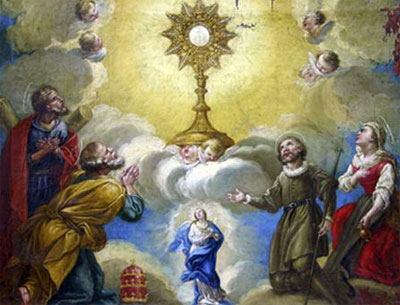"Mini-Vatican" seen as a threat to historic Madrid
 Madrid - In 1788, Spanish master Francisco de Goya depicted a popular celebration in honour of Madrid's patron saint in La Pradera de San Isidro (The Meadow of Saint Isidro).
Madrid - In 1788, Spanish master Francisco de Goya depicted a popular celebration in honour of Madrid's patron saint in La Pradera de San Isidro (The Meadow of Saint Isidro).
The painting, now at the Prado art museum, shows in the background a view across the Manzanares river of a wide green slope topped by the church of San Francisco el Grande and other white buildings.
The leafy area located between the church and Las Vistillas gardens still forms part of the Spanish capital.
It is loved by residents who go there to relax and "get some sun on our way to having a few beers," as commentator Ruth Toledano wrote.
Now, however, the western area which some regard as the historic heart of Madrid threatens to "disappear under concrete," as protesters claim.
This time, however, the alleged environmental threat does not come from the usual quarter of real estate speculators, but from Spain's Catholic Church.
The Madrid archbishopric wants to use the site to erect a large clerical complex which detractors have dubbed "the mini-Vatican."
The church says critics have misunderstood the project that will allow for green spaces to be preserved in the area.
Madrid's conservative city council approved the plan in February against the disapproval of leftist opposition parties.
The long-time dream project of Madrid archbishop Cardinal Antonio Maria Rouco Varela will occupy more than 25,000 square metres.
The complex, the details of which are still unclear, is expected to include a four-storey "house of the church," a three-storey residence for priests, a religious library, centres for the elderly and the homeless, and a parking lot of 200 places for clerics only.
"Rouco and (mayor Alberto Ruiz) Gallardon want to re-Catholicize Spain and make the church's (presence) visible just anywhere," liberal theologician Juan Jose Tamayo complained.
Critics fear new complex might be built in a style similar to the nearby 20th-century Almudena Cathedral, which many regard as tasteless in comparison with the splendour of other Spanish cathedrals.
Opponents of the project, who include architects and landscape specialists, say it would bury 15,000 square metres of greenery, including centuries-old gardens in the capital which is sorely in need of such natural spaces.
They also regard it as an attack against the history and culture of Madrid.
The area which has been immortalised by several well-known artists is "the only zone that has remained intact since the city was founded," Socialist Party representative David Lucas said.
The church, which already has numerous properties in Madrid, should not be erecting large residences and parking lots in a city suffering from lack of housing and parking space, Toledano complained.
Thousands of demonstrators have marched against the "mini- Vatican," which would make Madrid "lose its magic" and "become more mediocre and gray," according to a collective letter displayed on a campaigners' website.
Campaigners against the plan have also lodged a judicial complaint against it, and have even taken their case to the United Nations Educational, Scientific and Cultural Organization (UNESCO) and the European Commission.
The protesters have misunderstood the project, the architecture of which will fit in with its surroundings and which would "substantially improve the zone," the Madrid archbishopric said in a communique.
The city hall continues to side with the church, arguing that the project will allow it to establish a school and a sports centre in the area.
The only thing left for opponents of the "mini-Vatican" was to pray for a divine intervention, one commentator quipped.